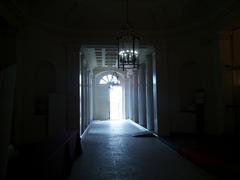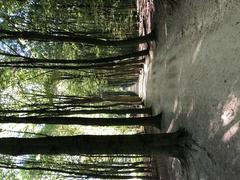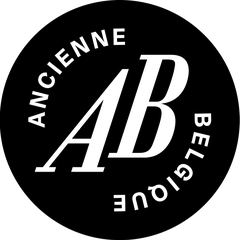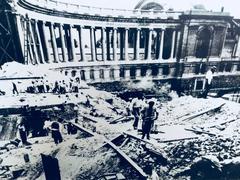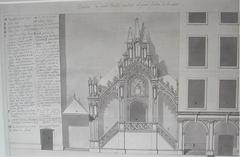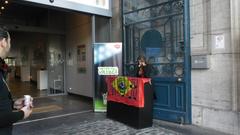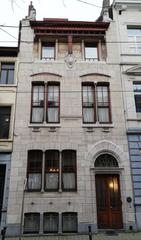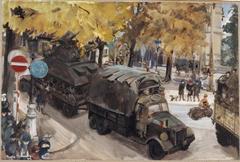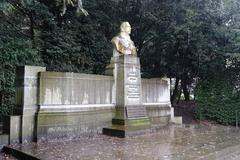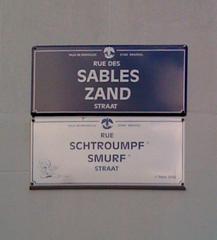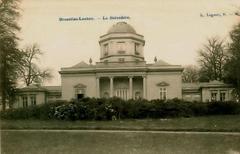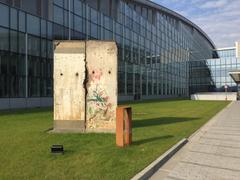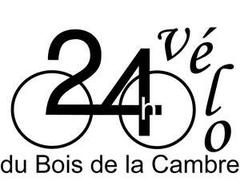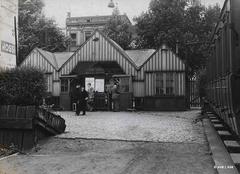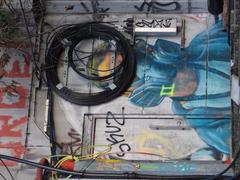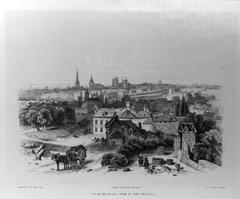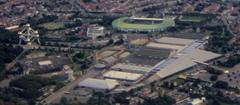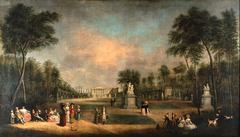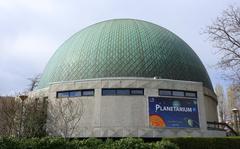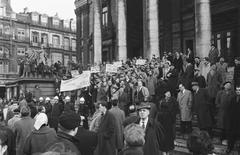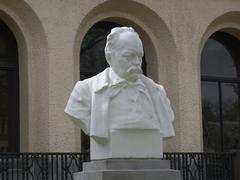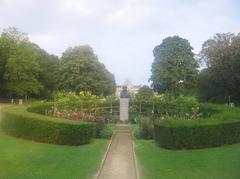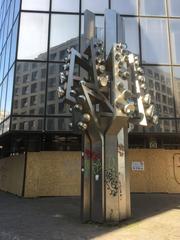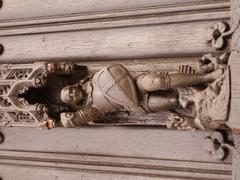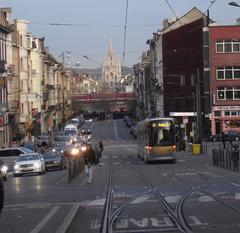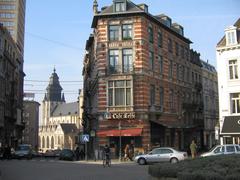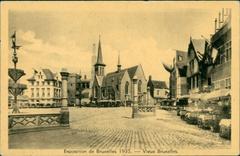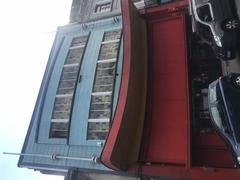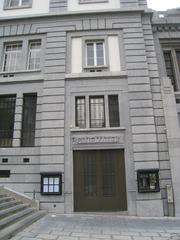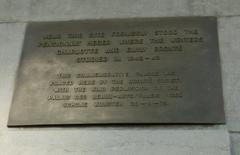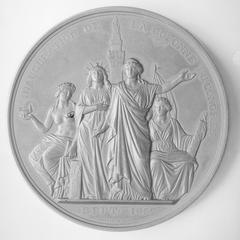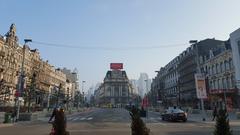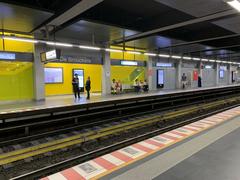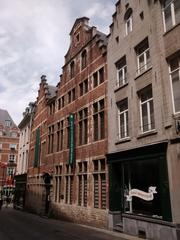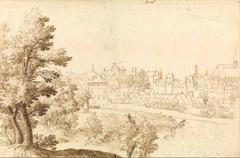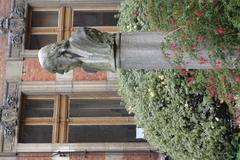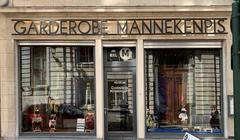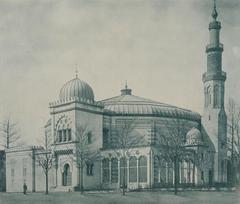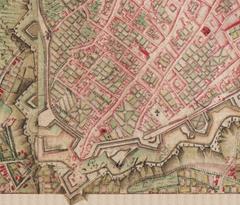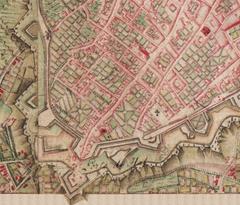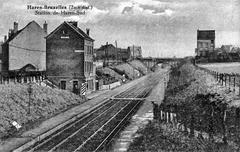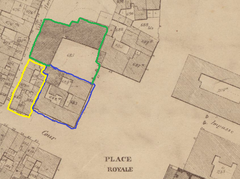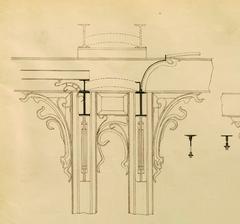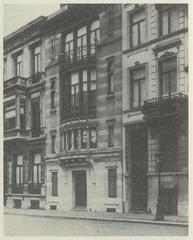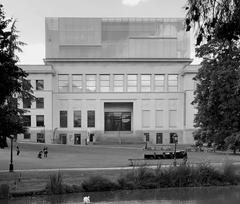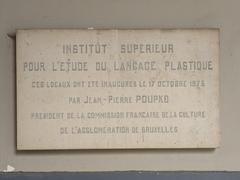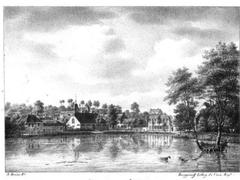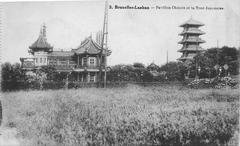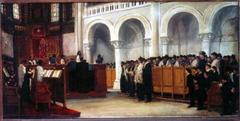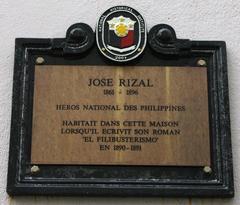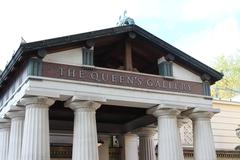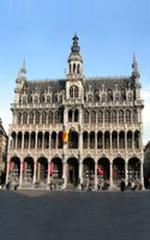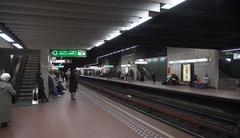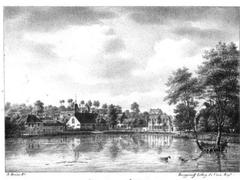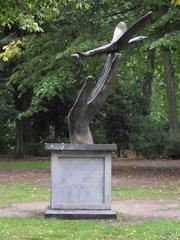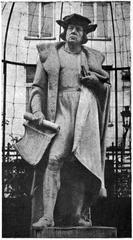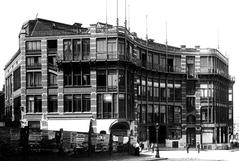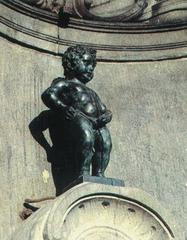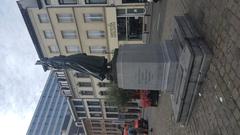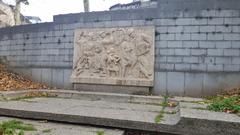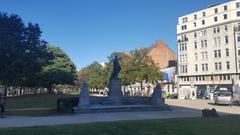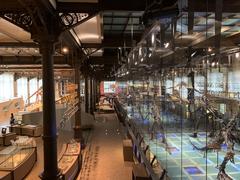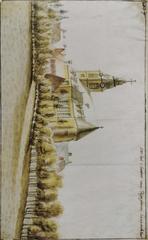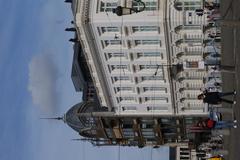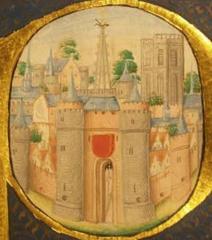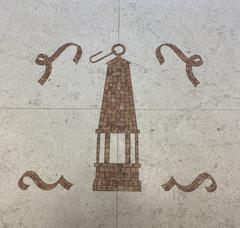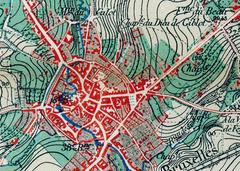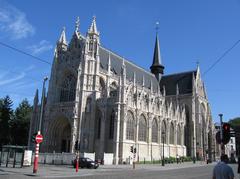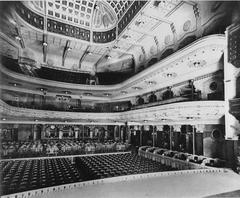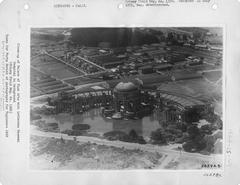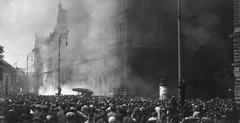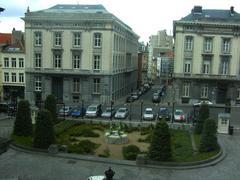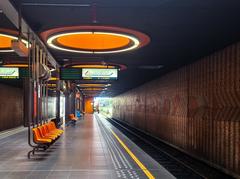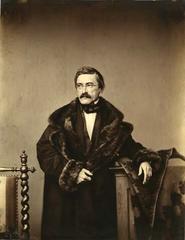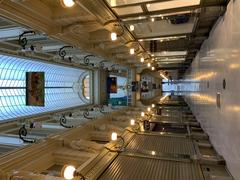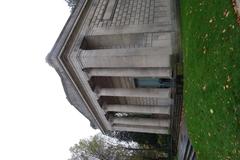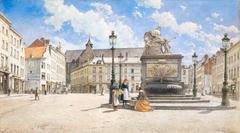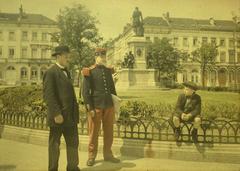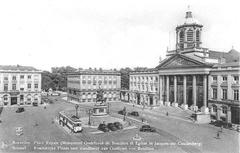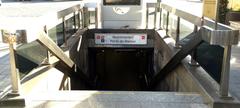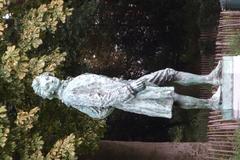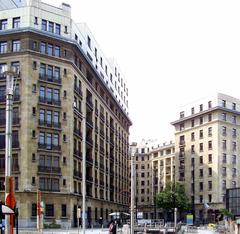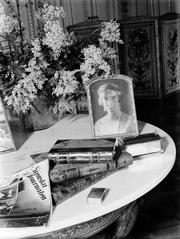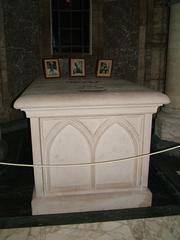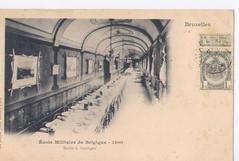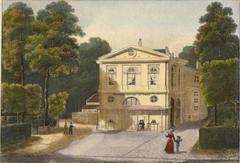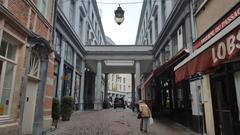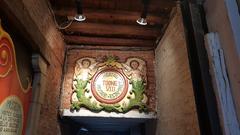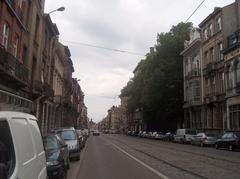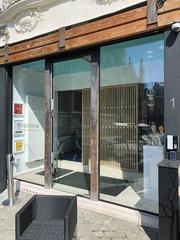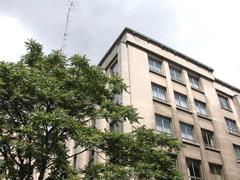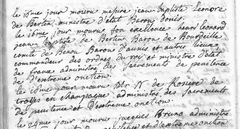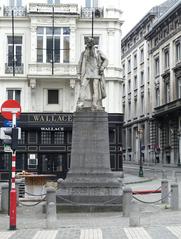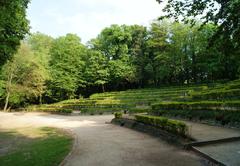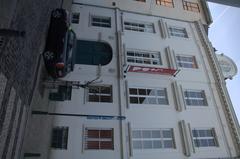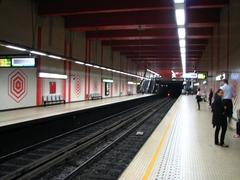
Visiting Crypt of the Martyrs’ Square in Brussels: Hours, Tickets, and Tips
Date: 01/08/2024
Introduction
The Crypt of the Martyrs’ Square, located beneath the cobblestones of Place des Martyrs in Brussels, Belgium, is an evocative historical site commemorating the heroes of the Belgian Revolution of 1830. This significant monument, designed by the French architect Claude Fisco and completed in 1775, serves as a profound reminder of Belgium’s struggle for independence. Initially a residential area for Brussels’ affluent citizens, Martyrs’ Square was transformed into a national memorial following the revolution (Wikipedia). The crypt’s construction, completed in 1838, reflects Belgium’s gratitude toward those who sacrificed their lives for liberty. Visitors to the crypt can explore its architectural grandeur, delve into its rich history, and gain a deeper understanding of its cultural and political significance. This guide provides comprehensive information on the crypt’s history, architectural features, visiting hours, and travel tips, ensuring a meaningful and informative visit.
Table of Contents
- Introduction
- History of the Crypt of the Martyrs’ Square
- Architectural Significance
- Historical Events and Renovations
- Visitor Information
- Cultural and Historical Impact
- Visuals and Media
- FAQ
- Conclusion
History of the Crypt of the Martyrs’ Square, Brussels, Belgium
Origins and Early History
The Crypt of the Martyrs’ Square, located in Brussels, Belgium, is a significant historical site that commemorates the heroes of the Belgian Revolution of 1830. This revolution led to Belgium’s independence from the United Kingdom of the Netherlands. The crypt is situated beneath Martyrs’ Square (Place des Martyrs), which was originally named Place Saint-Michel when it was constructed in the late 18th century.
Martyrs’ Square was designed by the French architect Claude Fisco in a neoclassical style and completed in 1775. Initially, it served as a residential area for the affluent citizens of Brussels. However, its role dramatically changed during the Belgian Revolution.
The Belgian Revolution of 1830
The Belgian Revolution began on August 25, 1830, sparked by a performance of the opera “La Muette de Portici” at the Théâtre de la Monnaie in Brussels. The opera’s themes of liberty and resistance against oppression resonated with the audience, leading to widespread unrest and eventually a full-scale revolt against Dutch rule.
Martyrs’ Square became a focal point during the revolution. Many of the revolutionaries who fought and died in the struggle for Belgian independence were buried here. The square was subsequently renamed Place des Martyrs to honor these fallen heroes.
Construction of the Crypt
In 1831, the newly established Belgian government decided to construct a crypt beneath Martyrs’ Square to serve as a final resting place for the revolutionaries. The crypt was designed to be a solemn and dignified memorial, reflecting the nation’s gratitude and respect for those who sacrificed their lives for independence.
The construction of the crypt was completed in 1838. It features a central chamber with a large sarcophagus, surrounded by smaller niches containing the remains of individual martyrs. The walls are inscribed with the names of the fallen, and the crypt is adorned with symbolic sculptures and reliefs.
Architectural Significance
The crypt is an excellent example of neoclassical architecture, characterized by its symmetry, simplicity, and grandeur. The entrance to the crypt is marked by a monumental staircase leading down from the square. The interior is designed to evoke a sense of reverence and solemnity, with its high vaulted ceilings and subdued lighting.
One of the most striking features of the crypt is the central sarcophagus, which is made of black marble and inscribed with the words “Aux Martyrs de la Liberté” (“To the Martyrs of Liberty”). This central monument serves as a powerful reminder of the sacrifices made for Belgian independence.
Historical Events and Renovations
Over the years, the crypt has undergone several renovations and restorations to preserve its structural integrity and historical significance. In the late 19th century, additional memorials were added to honor other notable figures in Belgian history.
During World War I and World War II, the crypt remained a symbol of national pride and resilience. It was a place where Belgians could come to pay their respects and draw inspiration from the courage of the revolutionaries.
In recent years, the crypt has been carefully maintained and restored to ensure that it continues to serve as a fitting tribute to the martyrs of the Belgian Revolution. The most recent restoration project was completed in 2018, which included cleaning and repairing the stonework, updating the lighting, and improving accessibility for visitors.
Visitor Information
Visiting Hours and Tickets
The Crypt of the Martyrs’ Square is open to the public year-round. There is no admission fee, making it accessible to all who wish to explore this important historical landmark. The visiting hours are typically from 10:00 AM to 4:00 PM, but it is advisable to check the official website for any updates or changes.
Guided Tours
Guided tours are available and provide in-depth information about the history and significance of the site. These tours are an excellent way to gain a deeper understanding of the events of the Belgian Revolution and the individuals who played a key role in it.
Travel Tips and Nearby Attractions
The crypt is centrally located in Brussels, making it easy to visit other nearby historical sites and attractions. Some notable places to explore include the Grand Place, Manneken Pis, and the Royal Palace. Public transportation options are available, including buses and trams, which provide convenient access to the site.
Accessibility
Efforts have been made to improve accessibility for visitors with disabilities. The most recent restoration project included updates to ensure that the crypt is accessible to all.
Cultural and Historical Impact
The Crypt of the Martyrs’ Square holds a special place in Belgian history and culture. It is not only a memorial to the heroes of the 1830 revolution but also a symbol of the nation’s enduring commitment to liberty and independence.
The crypt is a popular destination for both locals and tourists, who come to learn about the history of the Belgian Revolution and pay their respects to the martyrs. It is also a site for official ceremonies and commemorations, particularly on Belgian National Day (July 21), which marks the anniversary of King Leopold I’s accession to the throne in 1831.
Visuals and Media
High-quality images and videos of the crypt can enhance the visitor experience. These visuals should be optimized for the web with correct sizing and include alt tags with relevant keywords.
FAQ
Frequently Asked Questions
-
What are the visiting hours for the Crypt of the Martyrs’ Square? The crypt is typically open from 10:00 AM to 4:00 PM, but it’s best to check the official website for the most current information.
-
Is there an admission fee to visit the crypt? No, there is no admission fee to visit the Crypt of the Martyrs’ Square.
-
Are guided tours available? Yes, guided tours are available and provide detailed insights into the history and significance of the site.
-
What are some nearby attractions? Nearby attractions include the Grand Place, Manneken Pis, and the Royal Palace, all of which are within walking distance.
-
Is the crypt accessible to visitors with disabilities? Yes, recent restorations have improved accessibility to ensure that all visitors can explore the crypt.
Conclusion
The Crypt of the Martyrs’ Square is a poignant and powerful reminder of Belgium’s struggle for independence. Its rich history, architectural beauty, and cultural significance make it a must-visit destination for anyone interested in Belgian history and heritage. By preserving and honoring the memory of the martyrs, the crypt continues to inspire and educate future generations about the importance of liberty and the sacrifices made to achieve it. For more information, you can visit the official website of the City of Brussels.
Call to Action
Don’t miss out on exploring one of Brussels’ most significant historical sites. Plan your visit to the Crypt of the Martyrs’ Square today, and be sure to check out other related posts for more insights into Belgian history. Follow us on social media for the latest updates and information.



